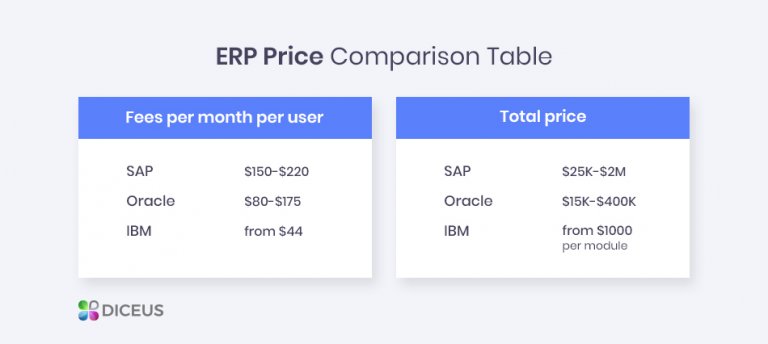Erp diceus
ERP System Cost and Why It's Important for Your Business

When it comes to running a successful business, investing in the right tools and technologies is crucial. One such tool that has gained significant popularity in recent years is the ERP (Enterprise Resource Planning) system. Implementing an ERP system can streamline your business processes, improve efficiency, and enhance decision-making. However, before diving into the world of ERP, it's important to understand the cost and its significance for your business.
An ERP system's cost can vary depending on several factors, such as the size and complexity of your business, the number of users, customization requirements, and the chosen ERP vendor. While the upfront cost of implementing an ERP system may seem significant, it's important to consider the long-term benefits and cost savings it can bring to your business.
The upfront cost of an ERP system typically includes licensing fees, implementation costs, hardware and infrastructure expenses, data migration, training, and ongoing support and maintenance. It's essential to gather accurate cost estimates from potential ERP vendors and carefully analyze the offerings before making a decision.
How Much Does an ERP Software Cost? A Detailed ERP Implementation

Implementing an ERP software requires careful planning and budgeting. The cost of an ERP implementation can range from a few thousand dollars to millions of dollars, depending on the complexity and scale of the project. The three primary cost components of an ERP software implementation are licensing, implementation services, and ongoing maintenance and support.
Licensing costs typically depend on factors such as the number of users, modules required, and customization needs. Implementation services include activities like software installation, data migration, configuration, and training. These costs can vary depending on the complexity of your business processes and the level of customization required.
Ongoing maintenance and support costs include software updates, bug fixes, technical support, and user training. It's essential to factor in these costs when budgeting for an ERP implementation.
An ERP system's cost can be significantly offset by the benefits it brings to your business. Implementing an ERP system can streamline operations, improve collaboration and communication among departments, increase productivity, and drive better decision-making through real-time data and analytics.
Conclusion
Investing in an ERP system is a strategic decision for your business. While the upfront cost may seem substantial, the long-term benefits and cost savings can make it a worthwhile investment. Prioritize gathering accurate cost estimates from potential ERP vendors, and consider factors such as licensing, implementation, and ongoing maintenance and support costs. An ERP system can pave the way for streamlined business processes, enhanced efficiency, and improved decision-making, ultimately contributing to the growth and success of your business.
Recipe Ingredients:
- Accurate cost estimates from potential ERP vendors
- Analysis of offerings before making a decision
- Strategic planning and budgeting for ERP implementation
- Licensing fees based on user count, modules required, and customization needs
- Implementation services including software installation, data migration, configuration, and training
- Ongoing maintenance and support costs for software updates and technical assistance
- Consideration of long-term benefits and cost savings
- Improved business processes, collaboration, productivity, and decision-making
Recipe Instructions:
- Gather accurate cost estimates from potential ERP vendors.
- Thoroughly analyze the offerings and compare them before making a decision.
- Strategically plan and budget for the ERP implementation.
- Consider factors such as licensing fees based on the number of users, modules required, and customization needs.
- Engage with implementation services that cover software installation, data migration, configuration, and training.
- Allocate a budget for ongoing maintenance and support, including software updates, bug fixes, and technical assistance.
- Take into account the long-term benefits and cost savings that an ERP system can bring to your business.
- Implement the ERP system to streamline business processes, enhance collaboration, boost productivity, and improve decision-making.